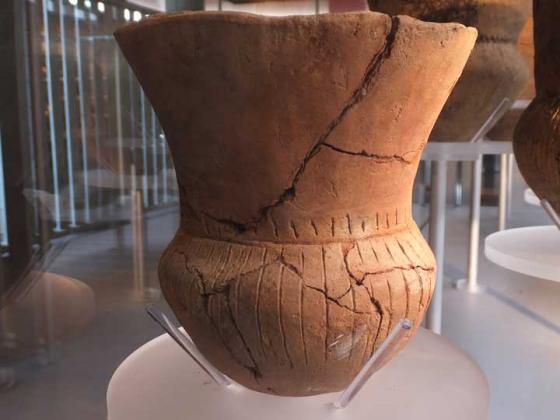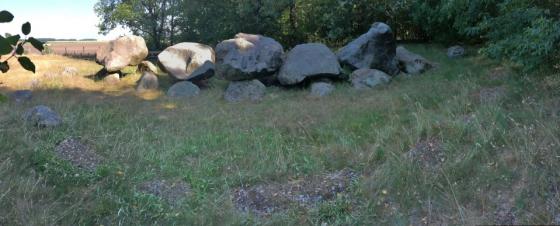Visited: September 5, 2012
With a length of 18 metres, D14-Eexterhalte numbers amongst the largest of the hunebedden. This hunebed lies close to the N33/N34 ‘Park and Ride’ just to the west of Gieten (roundabout at top right on map). To walk from here to the site of the hunebed (takes about 40 minutes), follow the pedestrian underpass to the west of the N34, then the foot/cycle path that flanks the highway south for about 600 metres and turn right on to Verlengde Asserstraat. Continue for just over a kilometre till the intersection with Stationsstraat. Turn right (north) up this road and walk on for 200 metres till the field gives way, on the right hand side, to a small area of parkland with oak trees. Hunebed D14-Eexterhalte lies here.

The names ‘Eexterhalte’ and ‘Stationstraat’ hark back to the days when trains from Assen to Stadskanaal stopped at a station here. The trains are now long gone, and the former station is now the reception building at ‘De Schaopsvolte’ campsite, just across the road from the hunebed.
Traces of holes can be seen in some of D14’s capstones, drilled centuries ago in an effort to split them using either gunpowder or wedges. In the Middle Ages, many hunebeds were wholly or partially destroyed in this way, their fragments being used in the building of churches or reinforcing coastal defences. In 1734, Drenthe issued a protection order on the remaining hunebedden, making it an offence to remove or damage their stones. Originally with a complement of nine capstones, only six remain on D14, the eastern three having long ago been broken up: two fragments bearing drill marks now lie inside the grave chamber.
D14 was excavated and restored by Van Giffen in 1927 when over twenty thousand fragments of pottery were unearthed. More recently, the monument was further restored in the 1960s and in 1996.
A short video about D14-Eexterhalte can be viewed on YouTube.



















































